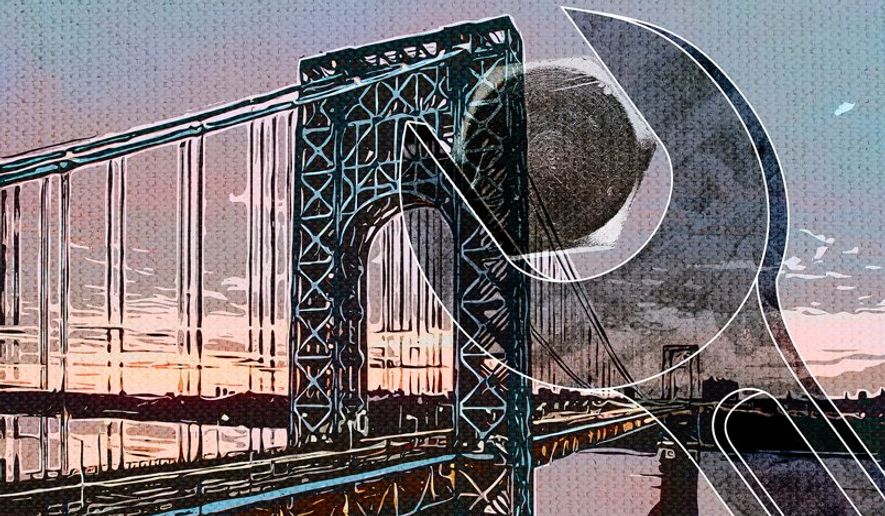OPINION:
As members of Congress and President Trump explore various spending plans to stabilize the $19.39 trillion U.S. economy in the midst of a global pandemic, one option to consider is an immediate investment in America’s aging infrastructure.
With most of the nation in a self-imposed quarantine and less cars on America’s bridges, streets, roads and highways, this may be the best time to ask America’s construction companies to hire unemployed workers from across the country for shovel-ready projects. Mr. Trump can jumpstart this historic job-creating effort by immediately holding a “Rebuild America” summit with the CEOs of large, medium and small-size companies with a pipeline of infrastructure projects.
Despite deep divisions among American politicians, there exists a bipartisan and historic commitment to upgrading America’s roads and bridges. Currently, 200,000 miles of major highways are in need of repairs, repaving or rebuilds. In addition, more than 47,000 bridges are in poor condition. According to the Government Accountability Office (GAO) the United States has 610,749 bridges of which 24 percent are deemed to be deficient — both structurally and functionally.
Indeed, the backlog for repairing existing highways and bridges is $420 billion and $123 billion, respectively. Furthermore, the U.S. Department of Transportation estimates that $167 billion is required for system expansion and another $126 billion for system enhancements such as safety, operational improvements and environmental projects.
Specifically, the Washington, D.C., metropolitan area, which includes the District of Columbia, Virginia and the nation’s capital, has a backlog of more than $30 billion in highway and bridge repair. The backlog of investment varies from state to state with some like Kentucky in need of $1 billion and others like South Carolina where the $1.8 billion backlog is for upgrading the water delivery systems. Overall infrastructure investment backlog in Louisiana stands at $13.1 billion.
Furthermore, according to the U.S. Secretary of Transportation, of the 2.5 million miles of roads in the U.S., 59 percent are in rural areas and this is a top priority due to the deteriorating condition of these roads. Another top priority of the federal government is the U.S. national parks that had more than 300 million visitors in 2019 and generated $40 billion in revenues.
According to the secretary of Interior, maintaining roads and bridges within the national parks is urgent because the infrastructure is over 50 years old. Specifically, this means repair and replacement of 5,500 miles (8,800 kilometers) of paved roads and 24,000 buildings. Strengthening the aging water infrastructure of the U.S. is also a top priority and for this reason the American Society of Civil Engineers estimates $271 billion in wastewater infrastructure is needed over the next 20 years to meet current and future demand.
This estimate does not include the more than $1 trillion needed over the next 25 years to maintain and expand drinking water services. To meet the growing energy demand in the United States and address the increasing use of renewable energy, the federal government and U.S. Congress have given top priority to building electricity generation and transmission. In 2019, the industry generated $62 billion in total revenues. Another growing area of focus within the United States is “Sustainable Public Works” where climate change risk mitigation meets infrastructure spending.
This bipartisan “Rebuild America” investment can also be an opportunity to shorten onerous permitting requirements. Today, even modest public infrastructure projects in the United States, including roads, bridges and airport runways, can take years for permitting due to the National Environmental Policy Act (NEPA) of 1970. The NEPA requires an environmental study of any major project that involves federal funding or permitting. As a result, for example, from 2013 to 2017, the average final impact statement took more than four years and ran 669 pages.
Historically, building major infrastructure projects in the United States was smooth and fairly efficient. For example, the Hoover Dam on the Colorado River was authorized by Congress in 1928 and construction started in 1933. This 726-foot concrete wonder opened in 1936. Indeed, one of the most famous buildings in the world, The Empire State Building, was started in 1930 and was completed within one year and 45 days.
Coupled with acceleration of permitting, American innovation must also be incorporated into speedier completion of infrastructure projects. For example, Virginia-based Martins Construction utilizes innovative approaches to rapid design-build projects and was highlighted in Popular Magazine in 2019 for a bridge replacement project that the company finished within a weekend (Friday till Sunday).
Beyond fast-tracking of permitting, use of innovative techniques in completing infrastructure projects, Mr. Trump can sign an executive order to strengthen current OSHA mandates for gloves, masks and goggles which will protect against the spread of Covid-19 while workers rebuild the roads and bridges, He can also request that participating companies sign agreements with local restaurants for food deliveries to workers in the field. This multiplier affect can soften the blow to many small businesses.
President Trump can strike a balance between getting parts of the economy back to work with prudent quarantines to prevent the spread of Covid-19 in the United States by calling on the nation to support “Rebuild America.”
• S. Rob Sobhani is CEO of Caspian Group Holdings.




Please read our comment policy before commenting.